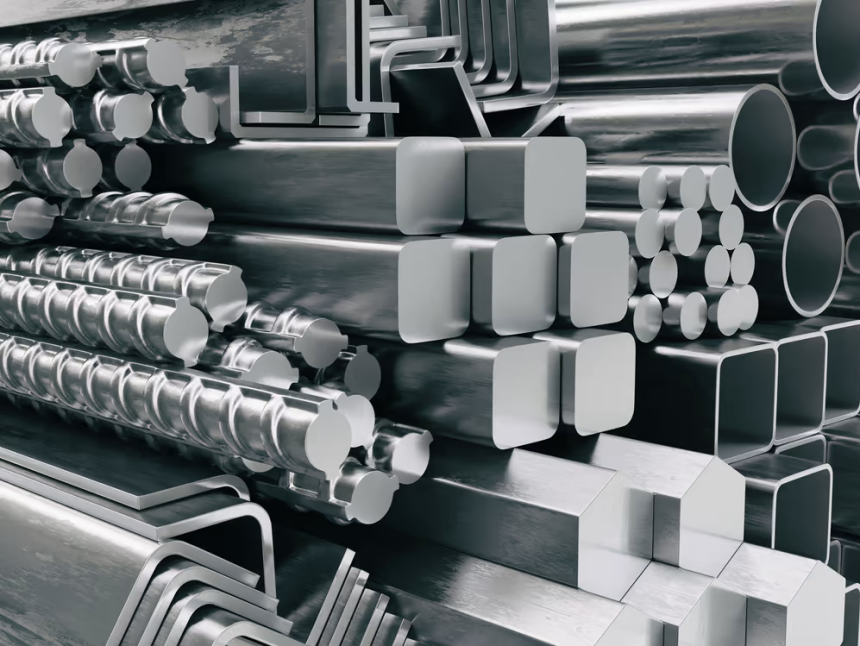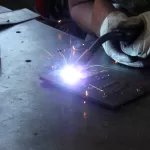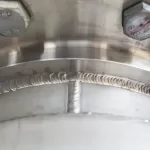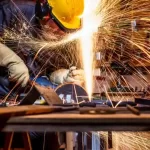Stainless steel is a generic term that refers to a variety of steels that differ based on certain characteristics. There are several ways to weld different types of stainless steel, and flux-cored wire is one of them.
In recent years, flux cored wire welding has become increasingly popular because it is easy to weld and can be used with even basic machines.
In this article, we will look at how to weld stainless steel with flux-cored wire and analyze the process thoroughly.
Let’s delve deeper!
Welding Stainless Steel with Flux Core
Welding Town
Main Categories of Stainless Steel
Stainless steel comes in several different forms. It is made from a range of iron-based alloys containing at least 10.5 percent chromium. Each type of stainless steel has different properties that may affect the welding method.
To better understand whether it is possible to flux core weld stainless steel, we first need to understand the various types of stainless steel.
Here are the three main categories:
Austenitic stainless steels
Ferritic stainless steels
Martensitic stainless steels
Austenitic Stainless Steel
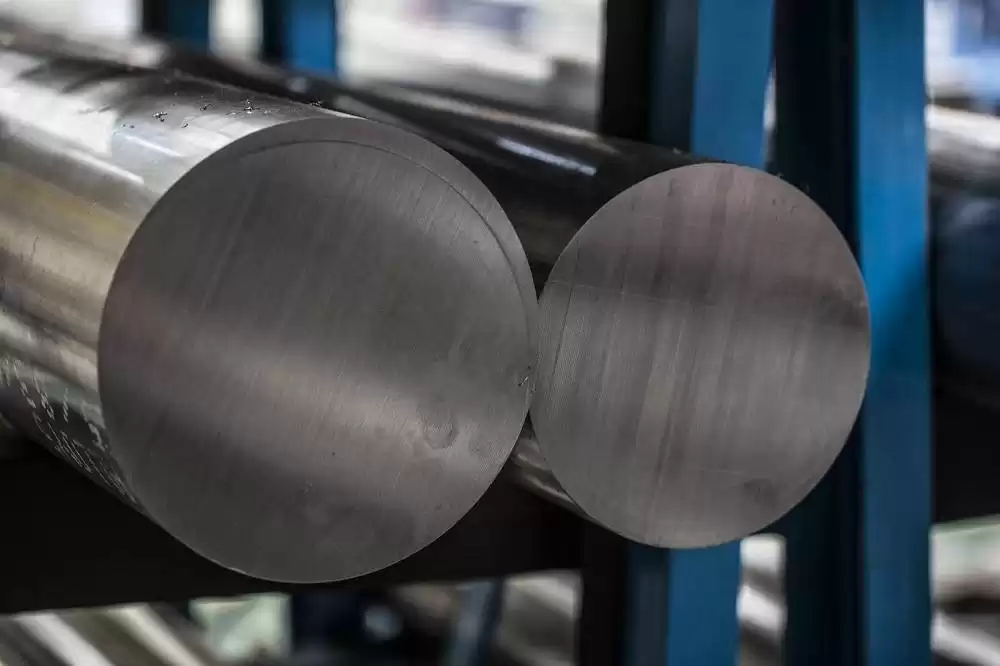
It is one of the most common types of stainless steel. It has a higher chromium content for greater corrosion resistance than most steel alloys.
It is also non-magnetic but becomes magnetic after cold working.
Some types of austenitic stainless steel include:
- Grade 304 Stainless Steel: This is one of the more common types of austenitic stainless steel and comes with the high tensile strength of roughly 90ksi. It also has a maximum operating temp of 870°C. The combined characteristics make it a favorite for several applications.
- Grade 316 Stainless Steel: This grade of stainless steel also comes with a high tensile strength at 84ksi, plus a maximum temperature of 800°C. Although the tensile strength is lower than the 304 grade, it has better resistance than chlorides such as salt.
Ferritic Stainless Steel
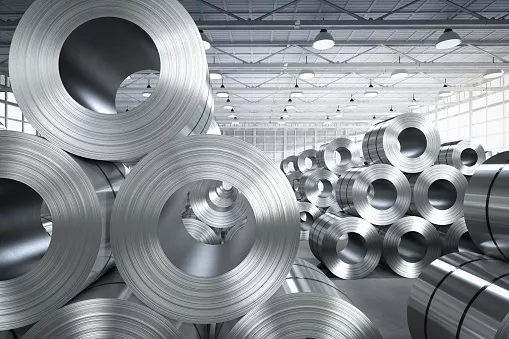
This is also a fairly common stainless steel, but not as common as austenitic steel. It is a magnetic steel that can be hardened by cold working. In addition, they tend to be less expensive due to the reduced nickel content.
Common types include:
- Grade 430 Stainless Steel: Grade 430 stainless steel is famous for its level of resistance against nitric acid. It has a tensile strength of 65ksi.
- Grade 434 Stainless Steel: This is a stronger grade of stainless steel with a tensile strength of 78ksi and a maximum temperature of 815°C. This makes it a bit better compared to high-temperature applications. It also has a high resistance to pitting.
Martensitic Stainless Steel
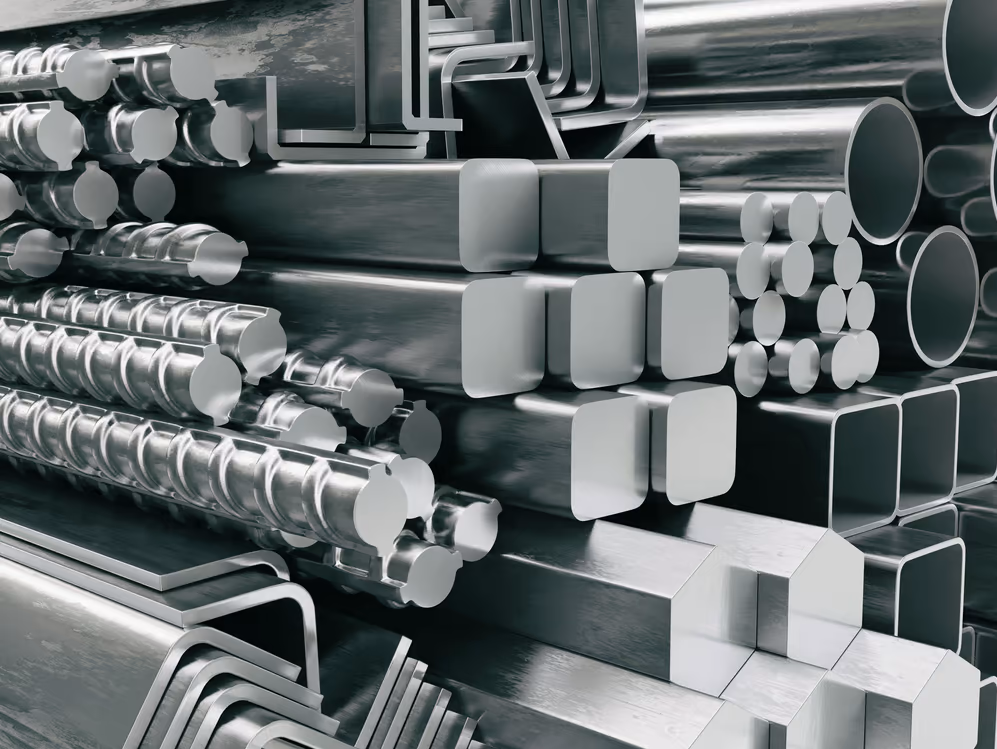
This is one of the rarest types of stainless steel, with a lower corrosion resistance than its counterparts. However, they are very hard and ideal for high-tensile strength applications
An example is:
- Grade 420 Stainless Steel: When annealed, this stainless steel has a tensile strength of 85ksi, and after hardening, the tensile strength jumps to 230ksi. It has good resistance to water, some alkalis, and mild acids.
The table below compares ferritic vs. austenitic vs. martensitic stainless steel properties.
| Properties | Ferritic | Austenitic | Martensitic |
| Chromium content | 11 – 30 % | 16 – 25% | 11.5 – 18% |
| Tensile strength at 20℃ | 400 – 600 MPa | 200 – 600 MPa | 700 – 2000 MPa |
| Thermal conductivity at 20℃ | 11 – 22 W/(m.K) | 10 – 25 W/(m.K) | 15 – 30 W/(m.K) |
| Melting point | 1375 – 1450 ℃ | 1375 – 1450 ℃ | 1370 – 1480 ℃ |
| Modulus of elasticity | 220 GPa | 220 GPa | 200 GPa |
Welding Stainless Steel with Flux Core
When it comes to welding stainless steel, flux-cored wire is considered to be one of the best options. These wires are not only faster and of better quality, but also have a higher tensile strength.
Due to the high density of stainless steel, welding with flux-cored wires provides a high deposition rate, especially when using flux-cored wires for methods such as MIG welding, as they are faster and easier to complete.
Whenever you use flux-cored wire welding techniques, you will need to use a protective layer to prevent the molten metal from spattering. Depending on the type of welding you need, you can choose to weld with either self-shielded or gas-shielded flux-cored wire.
In the case of self-shielded flux-cored wires, the core wire is independent and is protected by gas around the wire when it melts. Self-shielded wire is mainly used for welding thick metal parts with a high deposition rate and fast speed.
Gas-shielded flux-cored wires are used for welding vertically placed metals. They form a protective slag around the metal when welding. The slag prevents the molten metal from spattering. After the metal is welded, the welder should remove the collected slag.
How Flux Core Welding Works
The wire will be fed through the welder into the torch. This may seem similar to MIG welding, but the difference lies in how the filler metal is protected, whereas MIG welding has a separate gas cylinder connected to the welder. Protective gas is then delivered from the cylinder to the torch, protecting the wire from toxins that can damage the weld.
On the other hand, the material of the flux-cored wire produces purging agents and protective gases when the arc is struck and heated. An internal protective layer protects the weld pool and the wire provides the filler metal. The filler metal is then heated and drips down to form a weld between the two metal workpieces.
For a successful flux core weld, some of the materials you need include:
- Flux core welder
- Welding gun
- The metal workpiece
- Spools of welding wire
Advantages of Flux Core Welding
- Metallurgical benefits: There are certain metallurgical benefits from using flux core welding, where the entrapped slag and gas within the metal help create better quality. The slag also has elements that improve corrosion resistance, toughness, and crack resistance.
- Difficult joints, including vertical joints, are easier to work with flux core welding.
- High deposition rate process: Flux core welding provides a fast deposition process, especially when using gas-shielded wires that can deposit a weld in seconds. Also, the weld thickness is altered by constant voltage supply plus the plastic flow of the weld
- Reduced production costs: Although the price of flux wire is higher than solid wires, the overall cost of welding material, equipment depreciation, energy consumption, welding efficiency, auxiliary time, and other aspects, flux core welding comes out on top in terms of cost of operation.
- Flux core welding is high in efficiency, quality, and low energy consumption and uses energy-saving tech.
- Slag support: Slag forms weld beads, making it important to have a uniform thickness. The electrode’s diameter is also important in ensuring the weld bead is even in terms of uniformity.
- Heat input: Flux core welding uses thin wires, which help reduce the heat input and provide faster travel speeds than other welding processes. This, in turn, reduces thermal distortion while increasing material utilization rates.
- Stable arc temperature: Due to the flux in the flux core being stable from the thermo-sensitivity, it reduces the need for a heater which provides greater stability to the electrode temperature.
Disadvantages of Flux Core Welding
- Excessive splatter: Due to the arc length in flux core welding, the slag will be dispersed in a wider area compared to SMAW or GTAW.
- Poor results near gaps or cracks: The penetration of the gas-shielded wire is blocked for short-time bubbles, especially when welding is done near a gap or crack.
- Heavy fumes: The flux core process uses a gas shield wire which may lead to a lot of fumes, and an exhaust system and safety glasses may be required.
- Weld becomes brittle: The flux core welding materials have several elements that may affect the weld and increase brittleness. The welding quality of the solid wire is a bit different from tubular wires, with the strength of the flux core being lower than that of SMAW or GTAW due to the flux content.
Safety Practices When Working with Flux Core
One of the biggest priorities for a successful flex core welding job, or any other welding job is safety practices. You require a welding helmet to protect your ears, neck, and face from any welding debris. Apart from this, it would help if you also had safety glasses to protect you from the excessive light from the welding process.
You will also need welding gloves to protect your hands from hot debris and metal, plus welding sleeves, an apron, and a jacket.
Make sure you don’t handcuff your shirt or trousers to the cuffs, as sparks could get stuck inside and burn you. Also, make sure you tuck your trousers into a pair of sturdy boots and wear extra fireproof clothing.
Conclusion
The best choice for stainless steel is flux-cored welding, but other forms of welding can be used for the same job. Ensure that you have the proper knowledge of the work that will be done to ensure that you get the best results. It is also important to be well-protected in terms of equipment to prevent injuries. Otherwise, grab a torch and start welding stainless steel using the flux-cored wire method.







